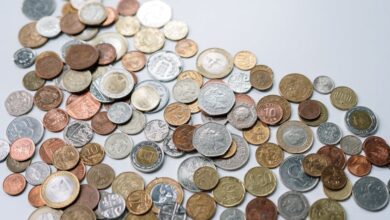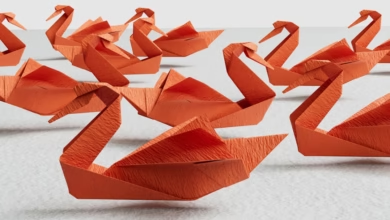Exploring Jewelry Metals: The Importance of Gold, Silver, and Platinum in Crafting and Investment

Jewelry has long been a symbol of beauty, status, and personal expression, with its allure often rooted in the metals that comprise it. This article takes a closer look at three of the most coveted materials in the world of jewelry: gold, silver, and platinum. Understanding jewelry metals goes beyond mere aesthetics; it delves into the properties and applications of precious and industrial metals that shape the industry. From the glimmer of gold investing to the durability of platinum, these metals hold significant value both in crafting exquisite pieces and as lucrative investment opportunities.
In our exploration, we will examine the role of precious and non-ferrous metals in jewelry crafting and investment, shedding light on how these materials influence market trends and consumer choices. Additionally, as the demand for sustainable practices in metal production grows, we will discuss emerging trends in metal recycling and the responsible sourcing of these valuable resources. Join us as we navigate the fascinating world of jewelry metals, uncovering the science of metallurgy and the artistry of metal fabrication that brings stunning designs to life.
- 1. Understanding Jewelry Metals: A Deep Dive into Gold, Silver, and Platinum
- 2. The Role of Precious and Industrial Metals in Jewelry Crafting and Investment
- 3. Sustainable Metal Production and Recycling: Trends in Jewelry Metal Fabrication
1. Understanding Jewelry Metals: A Deep Dive into Gold, Silver, and Platinum
In the world of jewelry making, understanding the various types of metals, particularly gold, silver, and platinum, is essential for both artisans and consumers. These precious metals have distinct characteristics that make them desirable in crafting beautiful and durable pieces.
Gold is renowned for its luster and resistance to corrosion, making it a staple in jewelry design. Its malleability allows for intricate metal fabrication, while its value is further enhanced by its status as a safe investment in the realm of gold investing. The purity of gold is measured in karats, with 24k representing pure gold, though many jewelers often work with alloys, such as 18k or 14k, to enhance durability and affordability.
Silver, often referred to as the "white metal," is another popular choice in jewelry crafting. Its beauty and affordability make it a favored option for both casual and high-end jewelry. However, silver is more prone to tarnishing than gold or platinum, which can lead to concerns about metal corrosion over time. To combat this, many jewelers use sterling silver, an alloy that combines 92.5% silver with other metals, such as copper, to improve its strength and longevity. Silver investing has also gained traction as collectors appreciate both its aesthetic appeal and investment potential.
Platinum is the most durable and dense of the three metals, making it an ideal choice for high-end jewelry pieces, especially engagement rings. Its resistance to wear and tarnish means that platinum jewelry can withstand the test of time. Often considered the ultimate luxury in jewelry metals, platinum is also used in a variety of industrial applications, including aerospace metals and automotive metals, due to its unique properties. Platinum's rarity contributes to its high market value, and it is increasingly being recognized in discussions about sustainable metal production, as it is often sourced from responsible mining practices.
Understanding these jewelry metals extends beyond their physical properties. It also encompasses their role in the broader context of metal commodities and market trends. The jewelry industry is influenced by metal mining practices and the sustainability of precious and industrial metals. The rise of metal recycling initiatives has also become crucial in promoting sustainable practices within the jewelry sector.
As consumers become more conscious of their purchasing decisions, the demand for responsibly sourced metals is rising. This trend is reflected in the growing interest in rare earth metals and battery metals, which are pivotal in powering modern technologies. By recognizing the importance of these metals in both jewelry crafting and the larger industrial landscape, consumers can make informed choices that align with their values.
In summary, a deep dive into gold, silver, and platinum reveals their unique qualities and significance in the jewelry market, while also highlighting the interconnectedness of jewelry metals with broader metal trends and sustainability efforts. As the industry evolves, understanding these dynamics will be vital for both jewelers and consumers alike.
2. The Role of Precious and Industrial Metals in Jewelry Crafting and Investment
In the world of jewelry crafting, both precious and industrial metals play significant roles, influencing not only the aesthetics and quality of the pieces but also the investment potential they offer. Precious metals such as gold, silver, and platinum are renowned for their rarity, beauty, and intrinsic value, making them the primary choices for high-end jewelry. Gold investing remains a popular strategy, as it often retains its value and can even appreciate over time, especially during economic downturns. Silver, while more abundant, also serves as an excellent investment, often sought after for its affordability and versatility in jewelry design.
On the other hand, industrial metals contribute to jewelry crafting in various ways. Metals like copper, aluminum, and zinc are often utilized in metal alloys, enhancing the durability and appearance of jewelry pieces. These base metals are crucial in the fabrication process, offering strength and resistance to corrosion, which is vital for items that are worn daily. Moreover, the rise of 3D printing metals has opened new avenues for creativity in jewelry design, allowing artisans to experiment with shapes and structures that were previously difficult to achieve.
The interplay between precious and industrial metals is also evident in the growing trend of sustainable metal production. As consumers increasingly demand eco-friendly practices, metal recycling has become essential in sourcing materials for jewelry. This not only minimizes environmental impact but also supports the circular economy, where metals are reused and repurposed, reducing the need for new metal mining.
Additionally, the influence of rare earth metals and battery metals cannot be overlooked, especially as the jewelry industry evolves. These materials are often integrated into modern designs, reflecting current metal trends that prioritize innovation and sustainability. The disciplines of metallurgy and metal fabrication are crucial in ensuring that these metals are processed effectively, resulting in high-quality jewelry that meets both aesthetic and functional demands.
In conclusion, the role of metals in jewelry crafting extends beyond mere decoration; it encompasses investment potential, sustainability initiatives, and advancements in technology. As the industry continues to evolve, understanding the various types of metals—from ferrous to non-ferrous, and from precious to industrial—will help both consumers and artisans make informed choices in their jewelry ventures.
3. Sustainable Metal Production and Recycling: Trends in Jewelry Metal Fabrication
Sustainable metal production and recycling are increasingly becoming focal points in the jewelry industry as consumers and manufacturers alike seek more environmentally friendly practices. As awareness of the environmental impact of metal mining grows, the demand for sustainable metal production methods has surged. Precious metals such as gold, silver, and platinum are at the forefront of this shift, prompting the industry to explore innovative approaches to reduce waste and enhance sustainability.
Metal recycling plays a crucial role in sustainable jewelry fabrication. By reclaiming precious and industrial metals from old jewelry and electronic waste, manufacturers can minimize the need for new metal mining, which often involves significant ecological disruption. The recycling process not only conserves resources but also reduces energy consumption associated with metal production. For example, recycling gold and silver typically requires only a fraction of the energy needed to extract these metals from their ores. This trend aligns with the broader movement toward metal commodities that support both economic viability and environmental stewardship.
Furthermore, advancements in metallurgy are paving the way for more sustainable practices in jewelry metal fabrication. The development of metal alloys that combine recycled materials with new metals enhances the quality and durability of finished products while maintaining ethical sourcing standards. As the popularity of non-ferrous metals rises—such as aluminum and copper—jewelers are also integrating these materials into their designs, reflecting a commitment to using base metals that are sourced responsibly.
In addition, the rise of 3D printing technologies in metal fabrication presents new opportunities for sustainable practices. This innovative process allows for precise manufacturing with minimal waste, using only the necessary amount of metal. Jewelers can experiment with various metal types, including rare earth metals, to create unique pieces without excessive material loss.
As part of a broader strategy to address metal corrosion and ensure the longevity of jewelry, many manufacturers are now focusing on the use of refractory metals, which provide superior resistance to wear and degradation. This shift not only enhances the sustainability of jewelry metals but also meets consumer demand for high-quality, durable products.
In conclusion, the jewelry industry is witnessing a significant transformation as it embraces sustainable metal production and recycling. By prioritizing environmentally friendly practices and innovative technologies, the sector is not only preserving precious resources but also aligning itself with the values of modern consumers who care about the impact of their purchasing decisions. As trends in sustainable metal production continue to evolve, the future of jewelry metals looks promising, combining beauty with responsibility.
In conclusion, understanding the various jewelry metals—gold, silver, and platinum—provides valuable insights into their roles not only in crafting exquisite pieces but also in investment and sustainability. As we explored, precious metals like gold and silver have long been favored for their aesthetic appeal and intrinsic value, while platinum stands out for its rarity and strength. The interplay between precious and industrial metals highlights a dynamic relationship in the jewelry industry, where metal fabrication techniques continue to evolve alongside trends in metal recycling and sustainable metal production.
Moreover, the rise in awareness regarding sustainability and ethical sourcing has propelled the need for responsible practices in metal mining and metallurgy. As consumers become more conscious of the environmental impact of their purchases, the adoption of recycled metals and 3D printing technologies is reshaping how jewelry is crafted. This shift not only conserves resources but also aligns with broader trends in various sectors, including aerospace, automotive, and energy.
As we look to the future, advancements in metallurgy and the exploration of non-ferrous and ferrous metals will undoubtedly influence jewelry trends. Whether you are interested in gold investing, silver investing, or simply wish to learn more about the fascinating world of jewelry metals, staying informed about these developments is essential. By understanding the nuances of jewelry metals, we can make informed choices that honor both craftsmanship and sustainability, ensuring that our adornments not only dazzle but also contribute positively to the world around us.
References:
(Include relevant sources here)





